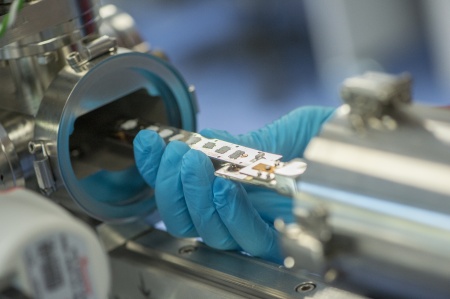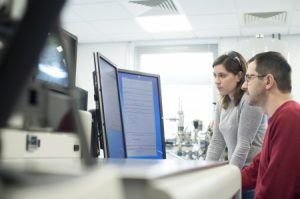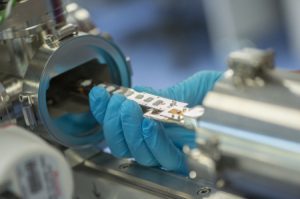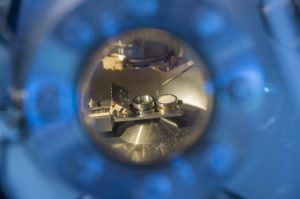
April 28, 2017, by Jim Wilson
Data management in the NMRC

An XPS Spectrometer
The Nanoscale and Microscale Research Centre
The Nanoscale and Microscale Research Centre (nmRC) is a cross-disciplinary facility at the University of Nottingham, supporting world-leading materials characterisation and nanoscience.
The NMRC is housed at University Park in the Cripps South Building (Behind the school of Chemistry). It houses a range of instruments and expertise spanning: Scanning Electron Microscopy, Transmission Electron Microscopy, Electron Micro Probe Analysis, X-Ray Photoelectron spectroscopy, Raman spectroscopy and Electron beam lithography.
This diverse collection of scientific instrumentation generates a great deal of raw and processed data in a range of standard and proprietary file types. The users of this instrumentation in the centre are also very varied. Some research is externally funded, acquiring images or information on a commercial basis. Some instruments are operated by technical staff/experts, some are open to use by individual researchers.
Rich and Diverse Data Environment
The complex situation, makes it incredibly challenging to manage the data being generated by the centre. Some data is taken away from the centre by individual users, some is retained for a long period of time for future research and some is deliberately deleted once a commercial organisation has ‘taken their copy away’. All of the data needs to be held in a secure and robust fashion, and there needs to be some method of distributing the data around the university to individual users.
This diverse and complex situation makes it a good test of any new storage and data management services that the University introduces in the future. If there is a potential show stopper in a particular product then the NMRC is in a good place to find it!
Our initial approach has been to select a single instrument from the centre, one that happens to be relatively modern and also generates fairly large data sets. A secure private network connection has been set up to an area of the existing research drive. This represents the situation that many instruments and departments around the University find themselves in. By studying the limitations of this common solution it will be possible to design a better solution for the NMRC and feedback information into the University’s strategic decision making.
Instrumental Legacy
This case study will neatly feed into a future piece of work that needs to look at how we as a University manage and support our instrumental and spectroscopic ‘estate’. How do we manage the life cycle of instruments and equipment which are reliant on specialist PC hardware, how do we preserve access to valuable research data after specific pieces of kit have been retired.
As always, if you are interested in seeing if we can help with your complex data situation, please get in touch with the Digital Research team.
No comments yet, fill out a comment to be the first

Leave a Reply